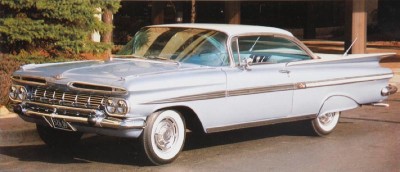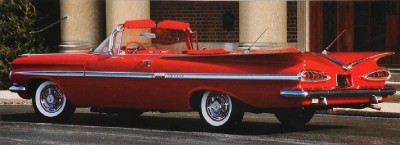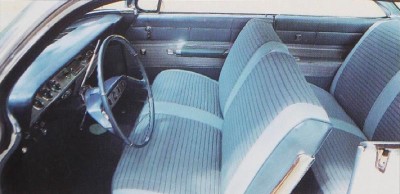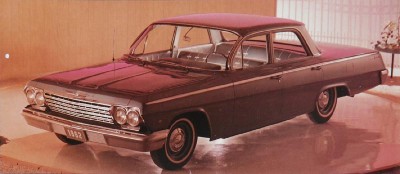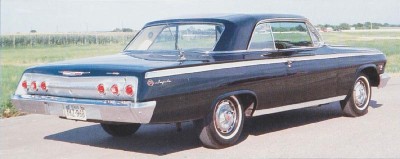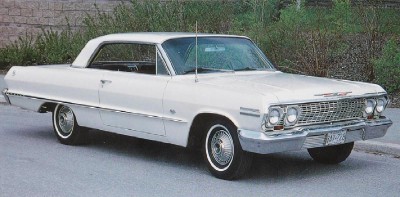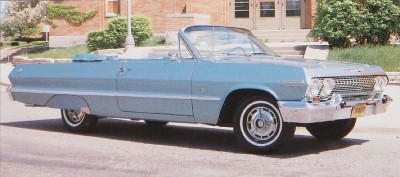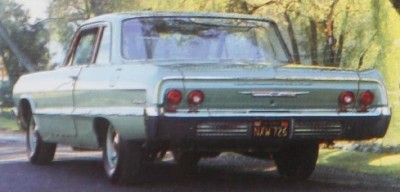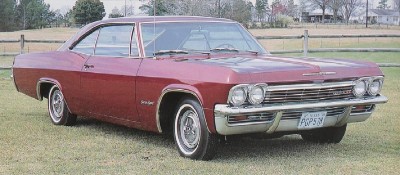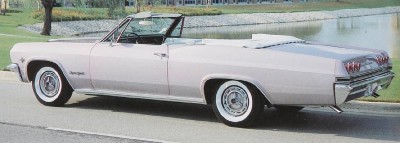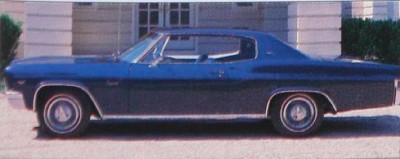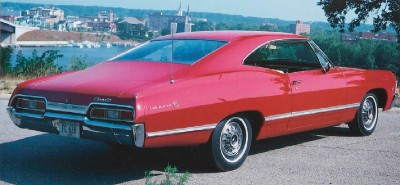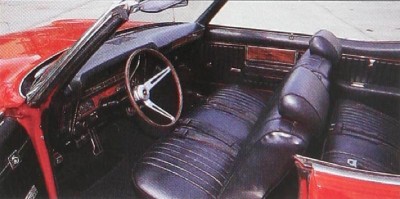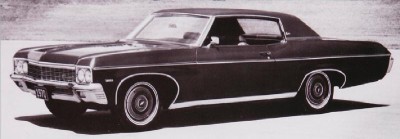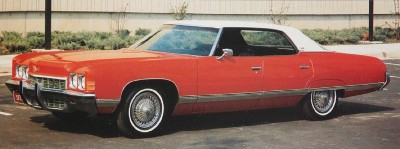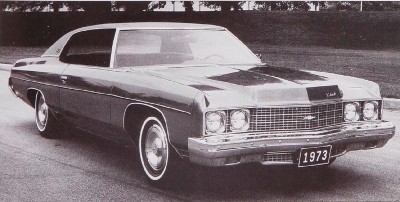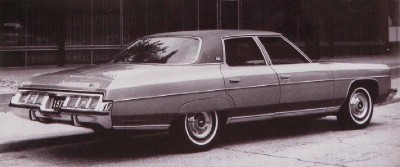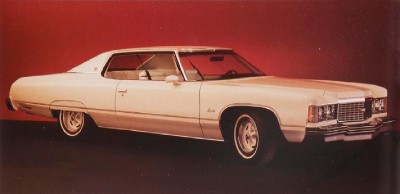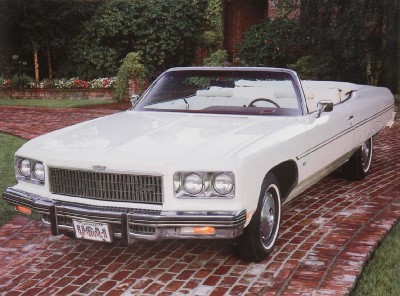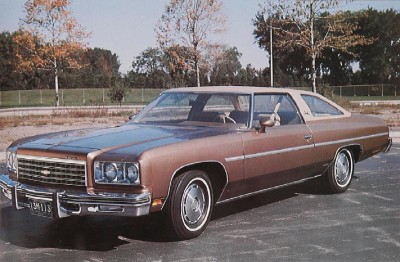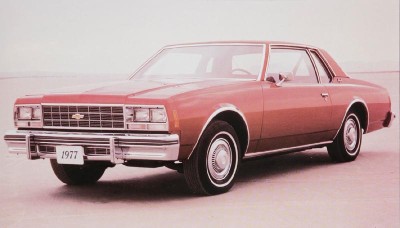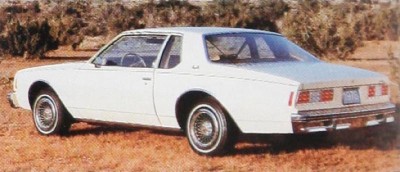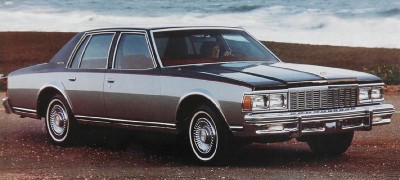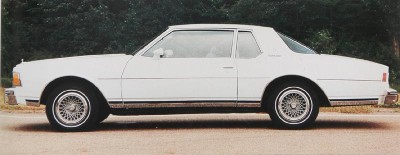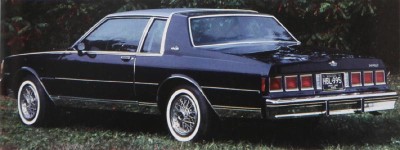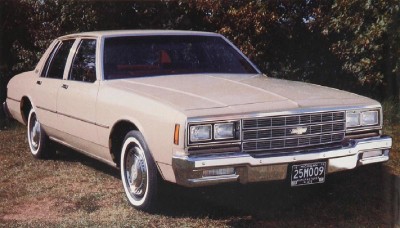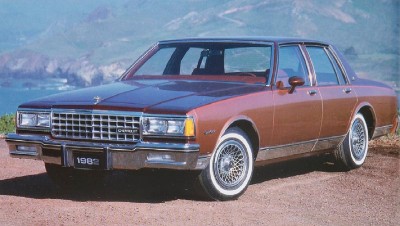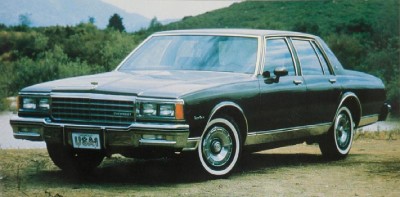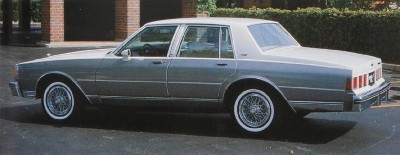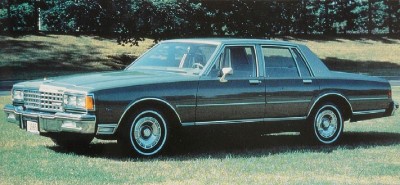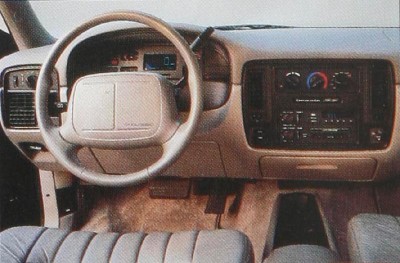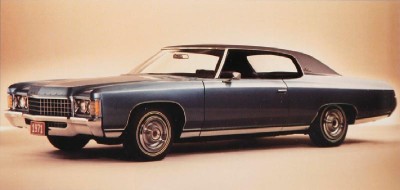 The 1971 Chevrolet Caprice resembled the Cadillac model of the same year.
The 1971 Chevrolet Caprice resembled the Cadillac model of the same year.The 1971 Chevrolet Impala, with its four body styles, was part of a long list of full-size Chevys for anyone who lacked the bucks to buy a posh Caprice hardtop coupe or sedan. In addition to two- and four-door pillarless hardtops, the Impala came as a regular four-door sedan and also as a convertible -- a body style that soon would begin to disappear. An Impala Custom Coupe blended the up-level Caprice roofline with mid-range trim.
Biscayne again served as the lowest-priced model and Bel Air the mid-range choice, both marketed only as four-door sedans. Standard engines were the 250-cubic-inch six and 307-cubic-inch V-8, but options ranged all the way to a 425-horsepower 454.
In addition to stretching the wheelbase to 121.5 inches (125 inches for wagons), this year's redesign changed the shape of large Chevrolets. Their bodies bulged in nearly every direction -- at the beltline, along body sides, even at the hood. A new eggcrate-patterned grille led the way, and prominent front-fender leading edges helped give Chevrolets a hint of Cadillac's look.
Impala production topped 475,000 cars (not counting wagons), but only a handful had a six-cylinder engine. Chevrolet promoted flow-through ventilation, but the vent louvers -- stamped into decklids and wagon tailgates -- soon drew complaints about water leakage.
Although the Biscayne -- available in sedan form only -- was the entry-level full-size Chevrolet, its "economy" roots were not particularly evident at a glance. Dressed up with chrome window trim, side moldings, whitewall tires, and full wheel covers, a Biscayne looked considerably nicer than its official base-model status might suggest. Despite this, shoppers willing to pay more to move up to a Bel Air or Impala were indifferent to the '71 Biscayne line; only about 22,000 went out the door. The line would disappear after the '72 model year.
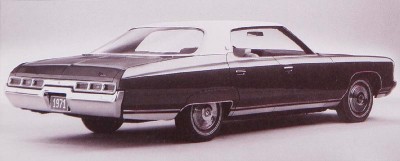 Rear decks on 1971 full-size Chevys were wider and more sculpted than before.
Rear decks on 1971 full-size Chevys were wider and more sculpted than before.Although the big Chevys maintained an enthusiastic audience, production was badly hurt by a 1971 UAW strike that affected all Chevrolet plants and lasted two months. Still, a total of nearly 668,000 big Chevys was nothing to sneeze at.
Of that number, only 10,200 left the factory with inline sixes. Clearly, buyers wanted V-8 power to match the line's Cadillac looks, a resemblance that was particularly pronounced on the Caprice. And, as historian George Dammann has pointed out, a Caprice or Impala optioned to the hilt was hardly less nice than a Caddy -- little wonder Chevy dealers had little trouble moving the big cars out the door.
1971 Chevrolet Biscayne, Bel Air, Impala, and Caprice Facts
Model
| Weight range (lbs.)
| Price range (new)
| Number built
|
| Biscayne | 3,732-3,888
| $3,096-$3,448
| 22,309 |
Bel Air
| 3,732-3,888
| $3,233-$3,585
| 315,986
|
Impala
| 3,742-3,978
| $3,391-$4,021
| 374,598
|
Caprice
| 3,964-4,040
| $4,081-$4,134
| 110,497
|
Station Wagon
| 4,542-4,738
| $3,929-$4,498
| 115,007
|

